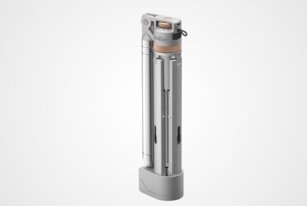Suppose you want to feel the adrenaline rush from speeding up from zero to sixty mph in less than five seconds minus risking your security on the asphalt. In that case, you have several alternatives: Mount onto a high-octane jet ski or buy a ticket and blast off on the SpaceX.
Okay, maybe the second one seems a little far-fetched, but hey, you can pull off the first one with minimal hassle. Since you’re reading this post, you’re probably a jet ski enthusiast who loves everything about the sport, from the machine to the experience itself.
Despite your expert level, please note that it isn’t impossible (or rocket science) to ride a jet ski. From an introduction to a jet ski to its history, the post below has all the info you could want to know about the Best jet ski. Let’s get on with it, shall we?
Best Jet Skis You Can Buy in 2024
Contents
- Best Jet Skis You Can Buy in 2024
- 1. ORCA Electric PWC
- 2. Kawasaki Jet Ski SX-R
- 3. Sea-Doo GTI SE
- 4. Sea-Doo RXT-X 300
- 5. Yamaha Superjet
- 6. Kawasaki Jet Ski Ultra 310LX
- 7. Sea-Doo Spark Trixx
- 8. Yamaha FX Cruiser SVHO
- 10. Yamaha EXR
- FAQ
- Kinds of Jet Skis
- 1.Recreational-light Jet Ski
- 2. Recreational Jet Ski
- 3. Luxury Jet Ski
- 4. Performance Jet Ski
- 5. Stand-up Jet Ski
It can be challenging to find a suitable jet ski for you if you’re new at skiing, considering there are countless on the market at the moment. Don’t worry. We’ve got your back. Here are the sweetest jet skis to hit the waters on this year:
1. ORCA Electric PWC
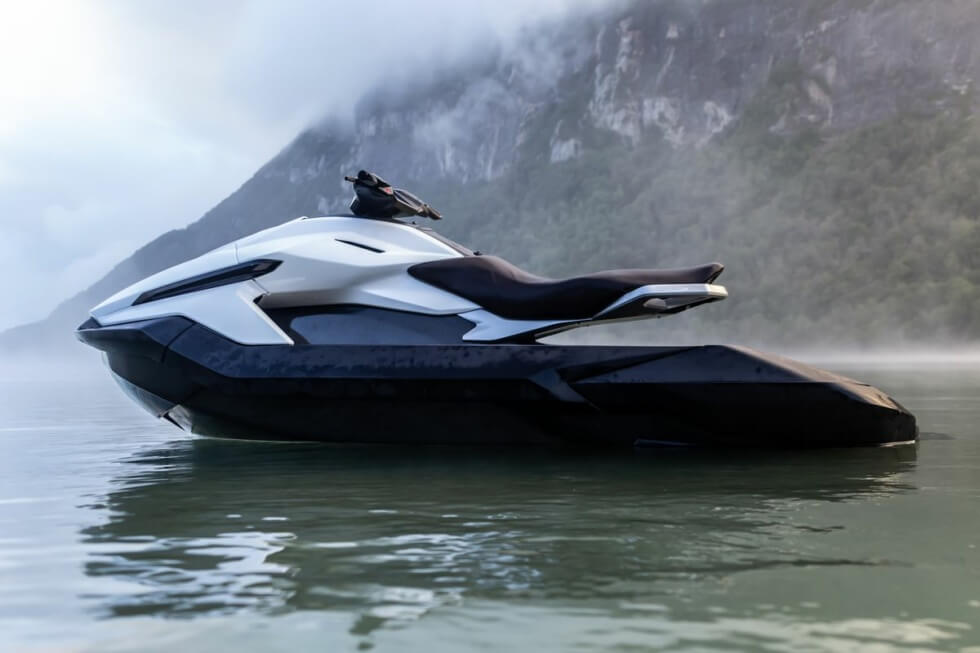
It’s Taiga motors’ initial electric jet ski model. While electric jet skis from the big players are all on the way, the Orca has arrived.
Taiga motors have concentrated on electric motors and jet skis for long. But their ORCA Electric PWC will be the most affordable model, making it the best jet ski for the money for entry-level riders.
Features and Specs
- Hull material- Carbon fiber
- Mass- 588 pounds
- Cell- twenty-five kWh capacity
- Top pace- sixty-two mph
- Length- 117.6’’
- Power- 180hp
What’s Cool About It
- Environmentally-friendly
- Super lightweight
- Has an impressive use time
- No motor or fuel maintenance
- It has no motor noise since it’s electric
What’s Not
- It doesn’t have the infrastructure for charging
- Range of sixty km (thirty-seven mph)
2. Kawasaki Jet Ski SX-R
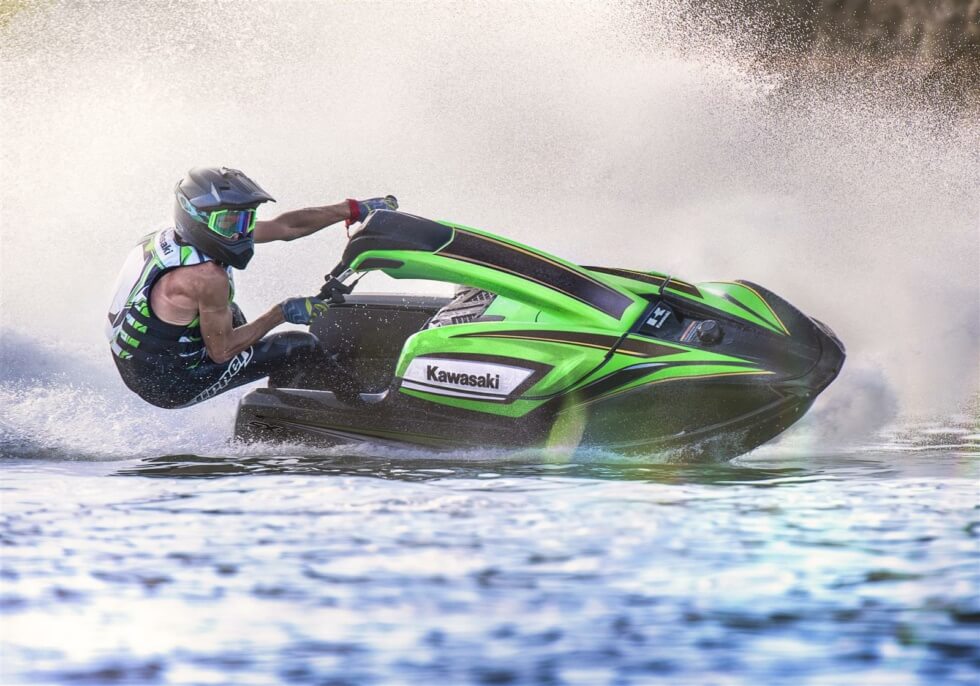
It’s the only standup jet ski on the Kawasaki label. It has a four-stroke motor that makes it steady. It also holds a dominant presence on many water surfaces.
It’s steady, big, and bulky, providing riders with excellent acceleration and pace.
Features and Specs
- Hull material- NanoXcel 2
- Motor- 1,498cc Inline-Four
- Mass- 551.3 (Curb)
- Top speed- sixty-two mph
- Length- 104.5’’
- Power- 160hp
What’s Cool About It
- Dig into corners minus slippage
- Standup alternative
- Excellent pace
- Steady on water
- Beginner-friendly
What’s Not
- It offers little storage
- No longer a model created for freestyle jet skiing
3. Sea-Doo GTI SE

Steady and dependable, the Sea-Doo GTI SE models (70 and 130) provide excellent leisure and touring jet ski experience.
Designed for relaxing and comfort, these jet skis are best for those seeking a lightweight and safe jet ski that’s ideal for holidays and is easily transportable.
Features and Specs:
- Power- 170hp
- Riders- two
- Bulk- 739lbs
- Motor- supercharged 1,630cc Inline- three
- Hull material- Polytec Gen 2
- Top speed- seventy mph
- Length- 130.6’’
What’s Cool About It
- It offers plenty of storage
- It includes a Bluetooth audio structure
- It provides a steady and predictable ride
- Nice entry-level
- Ergo-lock seating is very nice for holding with legs
What’s Not
- Minimal storage in comparison to other models.
4. Sea-Doo RXT-X 300

Upgraded in 2021, this ski is steadier, more comfortable, and controlled, minus losing speed and acceleration.
The engine’s three hundred horsepower makes for an impressive experience.
Features and Specs
- Power- three hundred hp
- Riders- one
- Hull material- fiberglass
- Motor- Supercharged 1,630cc Inline- 3
- Mass- 847lbs
- Top speed- sixty-seven mph
- Length- 130.6’’
What’s Cool About It
- Fresh braking structure
- Incredible pace
- Ergo-lock seating is awesome in racer profile
- Excellent acceleration
- Impressive speed
What’s Not
- High fuel usage
- A bit tiny for two passengers
5. Yamaha Superjet

It stays a fan favorite as one of the initial standup models on the market.
The latest upgrade to it is a four-stroke motor making it an intuitive, agile, and steady jet ski on the waters.
Features and Specs
- Top speed- fifty-four mph
- Riders- one
- Power- a hundred hp
- Mass- 375lbs
- Hull material- VaRTM fiberglass
- Engine- 1,049cc Inline- three
- Length- 95.7’’
What’s Cool About It
- More massive fuel tank
- Environmentally-friendly TR-1 Engine
- You don’t need a racing license (USA- all lands)
- Tunable handle pole and handlebar
- 2021 model redesigned
What’s Not
- Insufficient storage
- Little space for passengers
6. Kawasaki Jet Ski Ultra 310LX
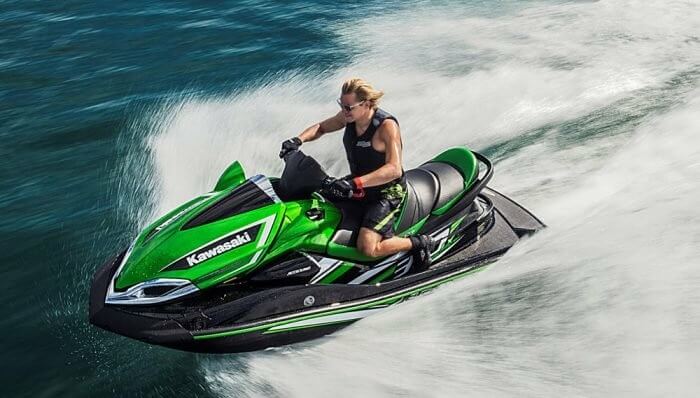
One of the most luxurious and strongest jet skis on the market, this ski has become the label’s flagship model. With a huge tank and 310 horsepower, this is the quickest private watercraft, has a built-in marine stereo, and is dependable.
Features and Specs
- Motor- supercharged 1,498cc Inline- four
- Hull material- reinforced fiberglass
- Length- 132.7’’
- Top pace- 67mph
- Weight- 1,047.4lbs
- Riders- 3
- Power- 310hp
What’s Cool About It
- Efficient and dependable
- Supercharged
- GPS mount in the handlebars
- High horsepower
- Awesome in rough water
What’s Not
- It has zero ski pylon
7. Sea-Doo Spark Trixx

Flare and pace give this jet ski model all the energy it requires for rushing over the water’s surface. It’s impressively cost-friendly and is a dirt bike on the water.
Excellent for performing tricks and attractive, this ski is among the best items on the market.
Features and Specs
- Hull material- Polytec
- Length- 110’’
- Riders- two
- Power- ninety hp
- Motor- 899cc Inline-Three
- Top speed- forty-eight mph
- Mass- 428lbs
What’s Cool About It
- Tunable handlebars
- Creative characteristics
- Fuel-efficient motor
- Ideal for freestyle tricks and moves
What’s Not
- Steadiness
- Tiny tank
8. Yamaha FX Cruiser SVHO
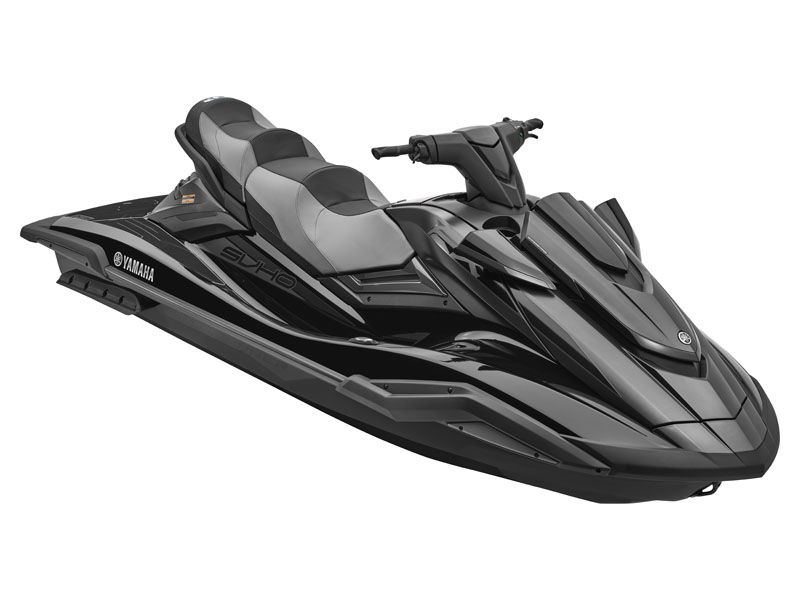
After improving their whole FX series, Yamaha has upgraded all their models to make sure that their items receive a boost in speed, comfort, and luxury.
The new SVHO engines this ski offers assures an unmatched powerful and soft ride.
Features and Specs
- Top pace- seventy mph
- Power- two hundred and fifty hp
- Riders- three
- Hull material- NanoXcel 2
- Engine- supercharged 1,812cc Inline- four
- Length- 140.9’’
- Bulk- 822lbs
What’s Cool About It
- Incredible acceleration with the biggest displacement engine
- Plenty of extra storage
- Seven-inch display touchscreen
- Lightweight hull
- Inbuilt security structure
What’s Not
- The glove box lock is clumsy
- It needs more maintenance than usual
10. Yamaha EXR

It’s the fourth model in the Rec Lite EX series. The additional ‘R’ in its name is for the racing motivation that Yamaha had for it.
Maneuverable and lightweight, this entry-degree performance jet ski is easy to manage as it stays strong.
Features and Specs
- Hull material- NanoXcel 2
- Motor- 1,049cc Inline- 3
- Top speed- fifty-four mph
- Weight- 540lbs
- Length- 123.6’’
- Power- 110hp
What’s Cool About It
- Huge tank
- Cozy seating (up to three passengers)
- User-friendly
- Fast and responsive
- Incredible storage
What’s Not
- Refueling on the water is unpleasant.
- More limited seating area
FAQ
What Exactly is a Jet Ski?
A jet ski is a personal watercraft. In fact, the name ‘Jet Ski’ is the Kawasaki company’s registered trademark. However, like the term ‘Hoover,’ the label name has come to refer to any private watercraft that functions on the same concepts.
Kawasaki was a casualty of its victory with its initial JS400 Jet Ski model arriving at the market in 1974.There are different designs of private watercraft that individuals call Jet Skis, but they all have a single thing in common: Propulsion.
Instead of moving through the water using a rotating prop, Jet Skis shoot high-pressure jets of water from their aft areas- pushing them forward. This makes them among the quickest private watercraft that you can purchase.
They also have the advantage of being more secure to be around than a car with revolving propeller blades.
Why You Should Consider Jet Skiing
Riding a jet ski doesn’t give you a fun experience alone, but it has plenty of advantages as well. Some of these advantages are:
- It enhances coordination and balance- crouching and sitting as you ride a jet ski and driving it around the water with the presence of billows improves your balance and coordination. What’s more, it improves your pose.
- It’s super fun- you can go jet skiing on your own or with your friends and family, making it more enjoyable to ride through the billows. Riding a high-speed jet ski is also an excellent way of receiving an adrenaline rush on the water.
- It heightens blood circulation- jet-skiing enhances your cardiovascular structure, which elevates your blood circulation. This permits more oxygen and nutrients to reach your entire body. Thus, nourishing all your muscles and assisting in the faster elimination of waste from your anatomy.
- It strengthens sinews- when you ride a jet ski, you improve your leg and arm muscles since you use them intensely to guide your jet ski through the billows.
- It soothes stress- recreational water sports, like jet skiing, are awesome ways of rejuvenating your mind and relieving pressure. Listening to the sound of the waters as you ride and concentrating on the waves will make you forget all your concerns.
- It assists in heating calories- if you’re looking for a fun way to burn those extra calories minus going to the gym, then jet skiing is the sport for you. Apart from having an unforgettable time, you can burn close to two hundred calories in only half an hour.
Kinds of Jet Skis
There are various kinds of jet ski types on the market to suit the diverse tastes of different riders.
Here are the five common jet ski groups:
1.Recreational-light Jet Ski
![]()
It’s the most pocket-friendly option on the market. With a top pace of approximately forty to fifty miles each hour, these models have a fifty to a hundred horsepower motor, and people use them for leisure.
For this reason, they’re tiny and lightweight, with a capacity of several grownups. They aren’t ideal for bad weather or waves as their little hull and lightweight make riding them in unsuitable conditions challenging.
2. Recreational Jet Ski
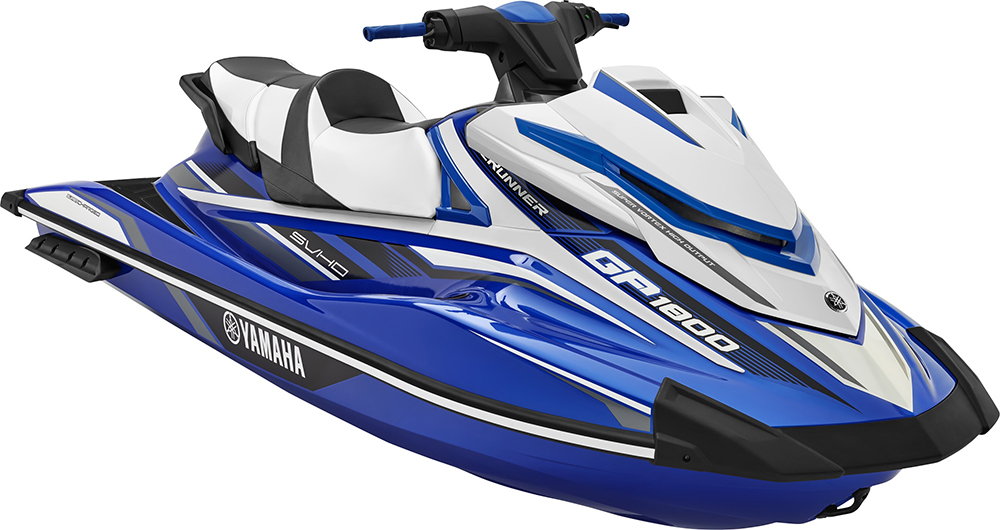
These are the most popular mid-level jet skis that you can find. They’re bigger and quicker than recreational light jet ski models. Plus, they have better attributes and specifications like performance alternatives and speed control options.
With a motor of between a hundred and two hundred horsepower, recreational jet skis have a top pace of between fifty and sixty-five miles per hour.
Depending on the jet ski’s horsepower, you can use recreational models for:
- Recreational racing
- Leisure
- Work (like towing)
- Wakeboarding
3. Luxury Jet Ski
![]()
These are the most characteristic-rich jet ski models. They have powerful motors with more than three hundred horsepower and boast a top pace of over sixty-five miles per hour.
Their producers create them to be massive, with more fuel and preservation capacity than other models. Manufacturers design them to provide the highest range of comfort available while offering an enjoyable and steady ride in nearly any condition.
All the premium attributes are included with luxury jet skis, so you won’t have to fret about missing out on anything. Eco-friendly performance modes, security structures, and even touch screen displays are typical characteristics in luxury jet skis.
4. Performance Jet Ski
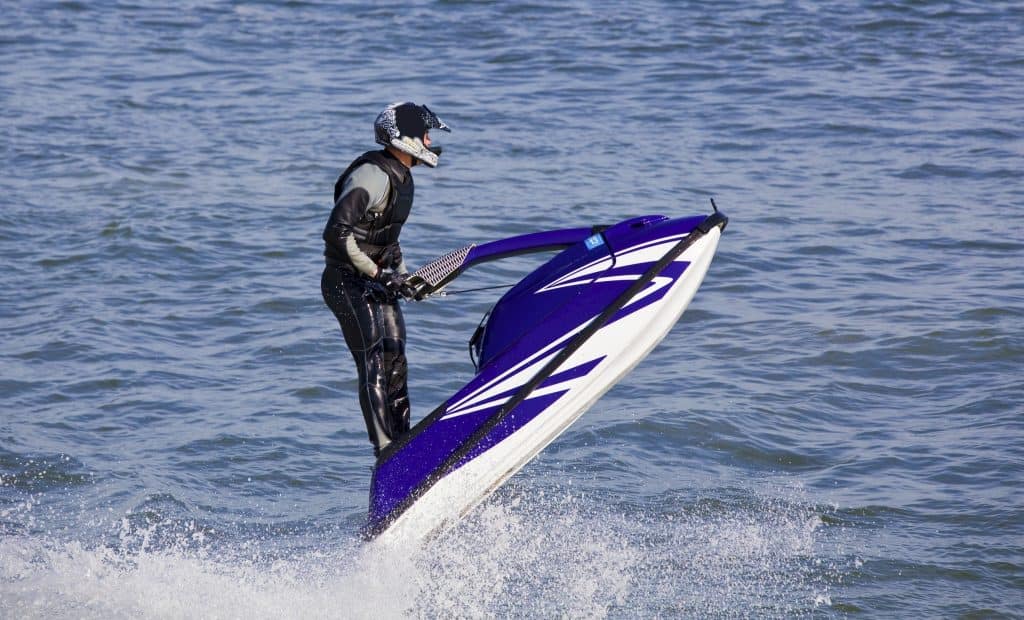
These are upper-class versions of recreational jet ski models. Their creators make them for competition. And, they’re easily the quickest jet skis on the market.
With increased speed, handling, torque, and performance, they can clock top speeds of seventy to eighty miles every hour, powered by highly powerful motors. They need a high degree of skill to ride effectively. And they’re ideal for professional jet ski riders.
5. Stand-up Jet Ski

Every jet ski was once a narrow standup model with long handlebars that can move up and down with the driver’s stance. However, they’ve reduced in popularity since they’re challenging to use, and individuals now mainly use them in competitions.
There are still a few standup models, but if you’re serious about a standup jet ski, your best bet is to purchase one second-hand.
Aspects to Consider When Purchasing a New Jet Ski
Take your time when buying a fresh jet ski. There are plenty of factors that you need to put into consideration. Some of them are:
1. Functionality and Size
People don’t use jet skis for carrying passengers alone. Some models have sufficient strength to tow water skiers, inflatable tubes, and wakeboarders.
Therefore, you have to consider its functionality and size prior to buying a new jet ski to ensure that it matches your requirements. Moreover, note that bigger jet skis are steadier but are more difficult to guide.
On the other hand, tinier jet skis that can carry one rider can turn easily in comparison to a bigger watercraft.
2. Specifications
Experts group watercraft according to their engines’ sizes. Bigger motors have more horsepower and pace. However, their hull designs influence their performance. Therefore, ensure that you have a look at your jet ski’s specifications as well.
Note its motor type, horsepower, fuel capacity, water cooling formation, and more.
3. Insurance
Insurance organizations will make you pay higher if you don’t have a boat or PWC license. Anticipate premium insurance charges from $900 to $1200 on a watercraft valued at $20,000 to $25,000.
You’ll have more affordable alternatives (approximately $700 each year). However, there will be catches such as higher extra charges when making a claim. Some insurance companies will cover theft instances and fires as well.
4. Maintenance
Think about the expenses you’ll have to incur to keep your ski in excellent condition. Here’s what you’ll also need to pay for apart from fuel:
- Maintenance charges when your jet ski isn’t in use- give special attention to your jet ski when you’re going to preserve it for over two months before taking it out once more, or it might operate when next you utilize it.
- Lubricant change- you have to convert your jet ski’s oil after every fifty hours of utilizing it. PWC service centers levy approximately $200 and more, or you can pay at least $175 if you handle it yourself.
- Battery- change the cell every three to five years for at least $100.
- Spark plugs- we suggest transforming the spark plugs every year. However, if you possess a jet ski with a double-stroke motor, change them more frequently. A set of four spark plugs goes for roughly $10
5. Preservation
You also have to consider how you’ll be preserving your jet ski. Where will you place it? Do you have sufficient vacuum in your garage to securely store it, or will you be putting it outside and cover it?
Ensure that you preserve your jet ski well to avoid expensive repairs since it can deteriorate fast when you store it outdoors.
6. Modifications/ Add-ons
Inquire about the accessories or upgrades/modifications that are present for the jet ski you’re eyeing. These can comprise a reboarding step, mirrors, and a cup holder.
For the add-ons, some of the essential ones are GPS units, life jackets, and jet ski covers.
7. Warranty
Most new jet skis will arrive with warranties. A warranty is vital so you can handle unanticipated injuries to your watercraft’s key components. Sea-Doo jet skis will have a standard warranty of two years. But, some models will have up to three years.
Meanwhile, Yamaha and Kawasaki have been providing a three-year warranty for their watercraft for several years now.
8. Number of Riders
If you’re planning to use your jet ski for transporting individuals, you must know how many it can carry.
Some models can only handle a single rider, while others can carry two to four people on one excursion.
9. Budget
Create a budget prior to making a purchase. There are plenty of jet skis you can select from to suit any of your budgets, beginning from $2,000 to over $15,000.
Think of these charges when preparing your budget:
- Driving license
- Trailer
- Extra accessories such as life jackets
- Insurance
- Registration
10. Transportation
You’ll require a trailer for transporting your jet ski. Some jet skis arrive with a mobile home, and you’ll have to purchase an isolated one for others. Think of where you’ll be launching your watercraft when deciding what type of trailer you’ll purchase.
11. Engine Strength
Jet ski motors tend to have between sixty to three hundred and ten horsepower depending on model and make. Naturally aspirated engines that arrive in stock jet skis usually create sixty to a hundred and eighty horsepower, while supercharged models can offer 250 to 310 horsepower.
Naturally aspirated motors utilize atmospheric pressure in the intake to push the motor’s combustion procedure. They deliver stable power, whereas turbo-charged engines use force induction and can lag- even though they give more energy.
Consider getting a jet ski that provides lower horsepower if you’re renting or just beginning so you can reduce the learning curve.
12. Kill Cord
The kill cord deactivates the motor so the ski won’t continue going when the rider falls off. It’s a red lanyard with a clip at one end that fixes to a switch on the console and a hook set to the rider at the other end.
Jet ski riders normally fix the cord to their knee, wrist, or life vest.
13. Handling
Depending on your skill and capability, you’ll want a varying degree of handling from your jet ski. Having an ergonomic steering structure will assist you in responding quickly and make more exact turns if you’d like to ride a nimble and soft jet ski.
14. Trim
A jet ski’s trim assists in keeping the ski’s nose up, down, or even- depending on how you tune it. When it’s up, it keeps the nose down and helps increase your steadiness if you’re gliding in choppy water.
You want your trim even so you can glide across the water with the smallest amount of opposition for reaching speeds on still water.
One More Thing…
Jet skiing is a wonderful sport that you can enjoy despite your experience level. The key is to familiarize yourself with the device and buy your watercraft from a certified vendor.
The options above are the best in the market and have undergone intense tests before their manufacturers released them to the public. Take your time. Find the one that best suits you.
Get your jet ski today if you haven’t already, hit the waves or still waters, and feel the adrenaline rush as your friends cheer you on in admiration.


